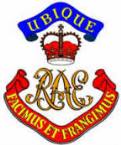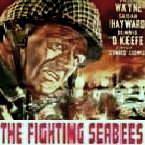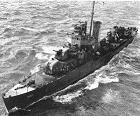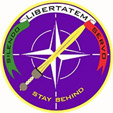rustysi
Posts: 7472
Joined: 2/21/2012
From: LI, NY
Status: offline

|
Let me start by saying that what's to come is JMHO.
quote:
MacArthur was not especially diplomatic with Australian allied forces.
Like to add, that that's a polite understatement, regarding one of our most sincere Allies.
Now, back on topic.
quote:
Port Moresby>>Lae >> Wewak >> Biak >> Leyte
While MacArthur's choices my have been both political and personal, I think they work pretty well in game terms as well. Of course that's just me, but I will explain.
This line of approach, coupled with the historical naval route through the Marshalls/Gilberts, stresses Japanese assets the most. Of course if done with thought and perseverance. The reason I say this is this avenue, while historical, has the shortest line of advance (opposed to through the Aleutian Islands, but lets not go there) and will sever Japan from her assets of oil/fuel (which the Aleuts will not). This should be of utmost priority as far as the Allies are concerned. As we should all be aware once Japan runs out of the 'black gold' its only a matter of time.
So what do I mean, "stresses Japans' assets the most". Well everything that is needed in these areas must be 'brought there' from the 'outside'. Fuel, supplies, reinforcements. To add to that there's no 'cover'. I know this as a JFB, and I'm pretty sure everyone realizes it deep down. You say 'cover', WTF???????? Well that's easy.
Let's look at your alternative.
quote:
Darwin >> Timor >> Makassar>> Balikpapan>> Davos (or slight variations)
First of all, much of what I need is produced right in the region. Mainly fuel and supplies. The rest can come in through the many islands (cover) along the way, mostly through the PI. Add to that the Allied sloc, while not really vulnerable (which Allied sloc is after say '42) is rather long, as you've pointed out.
With the central route Japan has rather wide open spaces to transverse to get stuff to where its needed. Prime hunting grounds for Allied subs. Especially for those AFB's who bemoan their ineffectiveness. It would be extremely difficult for Japan to close this area to Allied sub threats. TBH against the AI its no problem, but I don't think I have the assets (June '43) to do it in a PBEM. Even if I did it would be one he$$-of-a-fight.
As for the Allied side. Yes, they will face the same challenges, but by mid-'43, these should be swinging to their advantage. Just seems to me most Allied players don't wish to wait that long. That's not to say they can't bring pressure before that, like a Guadalcanal, or some such. An 'historical approach' does not mean every single thing has to happen as it did. You do need to hit 'em where they ain't, so to speak. I remember a screen shot posted by a long time member (can't recall the name right now, senior moment ) whose 'island hopping' was rather ingenious, and amusing as well. ) whose 'island hopping' was rather ingenious, and amusing as well.
At any rate, these are some of my thoughts on the matter. I do look forward to trying them out as an AFB some day.
As always YMMV.
_____________________________
It is seldom that liberty of any kind is lost all at once. Hume
In every party there is one member who by his all-too-devout pronouncement of the party principles provokes the others to apostasy. Nietzsche
Cave ab homine unius libri. Ltn Prvb
|
 Printable Version
Printable Version







 ) whose 'island hopping' was rather ingenious, and amusing as well.
) whose 'island hopping' was rather ingenious, and amusing as well. 









 New Messages
New Messages No New Messages
No New Messages Hot Topic w/ New Messages
Hot Topic w/ New Messages Hot Topic w/o New Messages
Hot Topic w/o New Messages Locked w/ New Messages
Locked w/ New Messages Locked w/o New Messages
Locked w/o New Messages Post New Thread
Post New Thread